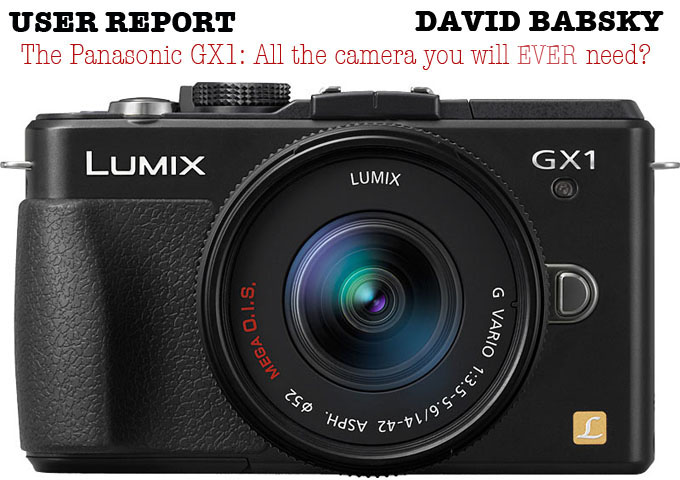
The Panasonic GX1: All the camera you will ever need? By David Babsky
From Steve: This is NOT my review of the GX1. This is a user report from David Babsky. Figured you may enjoy it while I work on my review though by the time it is done we may end up with the same conclusion!
Panasonic’s GF series started out great as mirror-less compact interchangeable-lens pocketable “micro-four-thirds” cameras – with the GF1 – and then went a bit twee with the GF2 and the almost button-less GF3 ..they went all touch-screen and tiny, and ‘one-step-up-from-a-point-&-shoot’ instead of developing into a useful ‘system’ camera. (The GF3, for example, has no provision for a clip on electronic finder, nor an external-flash hotshoe.)
But the GX1 has now got Panasonic back on track.
The GX1 is a micro-four-thirds camera, like the other Panasonic ‘G’ series cameras (SLRs and ‘mirror-less-compacts’) and like the Olympus PENs. The GX1 is a bit smaller than the original GF1, and a bit larger than its successor GF2, with a bigger grip than either of them, making it easy to hold without accidentally thumbing the touch-screen and thus unintentionally changing settings – as often happens with the GF2 and even smaller GF3!
The GF1, GF2 and GF3 were (are) 12mpxl cameras, with a display screen on the back and an optional clip-on (low-res) electronic finder for the 1 and 2 – but not for the GF3. The GF2 was the GF1 shrunk by 18%, making it less easy to hold ..and the added touch-screen capabilities meant that the ball of your thumb (accidentally touching the screen) might engage Manual Focus instead of Auto Focus, or move the focus point or make any number of other accidental changes.
The GX1, like the GFs, is a descendent of Panasonic’s (and Leica’s and Olympus’) original ‘Four-Thirds’ cameras, which had – just like a film or digital SLR – a flipping mirror between the lens and the sensor: the mirror diverted the lens’ view into the optical viewfinder until the moment you squeeze the ‘shoot’ button, and then the mirror flips out of the way to let light straight through to the sensor. These cameras had – and do have – a sensor one quarter the size of a full-frame 36x24mm sensor (the size used in the Leica M9, Canon 5DMkII, etc) and slightly smaller than an APS-sized sensor. So the ‘crop factor’, or magnification factor, of a Four-Thirds camera is 2x ..meaning that a 25mm lens on a Four-Thirds camera behaves just like a 50mm lens does on a ‘full-frame’ sensor. Compared that with the (roughly) 1.5x factor when using an APS camera, on which a 25mm lens behaves like(approximately) a 40mm lens on a full-frame camera.
Removing that flipping mirror let Four-Thirds manufacturers reduce the distance between the back of the lens and the sensor, thus making the resulting ‘MICRO-4/3’ cameras much smaller, but keeping the same size sensor. With the mirror gone, the optical reflex finder was gone too, so Olympus and Panny provide electronic “live view” on the rear display, just like other pocket compact cameras, with an optional add-on electronic viewfinder (EVF) – bought separately – for easier viewing in bright sunlight (like a teeny camcorder finder) or when you don’t want to hold the camera at arm’s length.
Olympus quickly went to a hi-definition megapixel EVF, while Panny lagged behind with only a 460k screen and a 202kilo-pixel finder.
[ad#Adsense Blog Sq Embed Image]
Sensor size:
Sony’s NEX, Samsung’s NX, Fujifilm’s X100, Leica’s X1 and other larger-sensor APS-sized cameras offer a bigger sensor than the micro4/3 cameras, thus potentially clearer low-light results and more detail, and with optionally shallower depth-of-field, but with generally bulkier lenses to match the larger sensor. Sony’s latest NEX 7 has an EVF built-in, instead of it being a fragile, optional clip-on. (The APS-size Fuji X100, with its built-in hi-def viewfinder, and the Leica X1, don’t, however, accept interchangeable lenses.)
These and other manufacturers’ offerings, both APS-sized and m4/3, provide very compact interchangeable-lens ‘system’ cameras, once known as ‘EVIL’ (Electronic Viewfinder Interchangeable Lens) but now generally known as ‘CSC’ (Compact System Cameras), which don’t have the bulk or the bulge of internal-top-mounted-viewfinder SLRs.
(Sensor sizes courtesy of Wikipedia.com)
Panasonic has raised the GX1’s resolution from the 12 megapixels of their GF models to 16 megapixels – matching the Sony NEXs and Panny’s G3 SLR, being only 2mp short of the Leica M9 full-frame sensor (..though the M9 has only manual-focus lenses, no zooms, no HDR, slow picture review, max 2500 ISO, no electronic finder, no “live view”, and – unlike most other digital cameras – can’t shoot video ..but the M9 has, remember, a FULL-FRAME sensor, capturing far better detail than the smaller m4/3 sensor, and offering shallower depth-of-field to make whatever’s in focus stand out from its background).
Adding pixels seems, at first, like a great bonus, but now do the math(s): the original GF-series sensor shot 4,000 x 3,000 pixels, giving a total of 12,000,000 pixels. The GX1 shoots 4,592 x 3,448 = 15,833,216 pixels. So it’s gained about 600 pixels across the width of the shot, and 450 pixels up the height. Not a great deal. But what it HAS gained is increased light sensitivity: max ISO of the GF1/GF2/GF3 models were 3200/6400/6400 ..the GX1 has doubled that to 12,800. But – as with all digital cameras – these ISO numbers should be taken with a pinch of salt; the highest USABLE number (without too much digital noise, and jpeg artefacts) is generally one notch down from the maximum.
The following images are all full size – click for full size
Lumix 14-140 HD zoom at 48mm (96mm equivalent on full-frame) hand-held at 160, 3200, 6400 and 12,800 ISO. Everything’s fairly good up to 6400, then banding and severe noise come in at 12,800, at least in dark areas. The 160 ISO shot was 1/10th sec, showing great in-lens stabilisation with the 14-140mm lens which – without stabilisation – would have needed at least 1/100th sec shutter speed.
ISO 160
ISO 3200
ISO 6400
–
ISO 12,800
Increased specs:
The GX1 incorporates the features of the original GF1 with the addition of:
1 More pixels: 16mp instead of 12mp (max 4592×3448 [4:3] 4576×3056 [3:2])
2 Full HD video at 1920x1080i, up from 720p, with stereo sound (but no external audio input jack)
3 Higher resolution EVF: 1.4mp, up from 202kp. (but this is an added accessory)
4 Same 3″ 460k rear screen, but touch-capable focusing and shooting (as on GF2 and GF3) plus two extra touch-screen ‘virtual’ customisable buttons
5 Higher max ISO 12800 (though serious noise after 6400) up from 3200 on GF1
6 Incredibly fast – and accurate – autofocus, even in dim light, without any focus ‘hunting’
7 Newer RAW format – with same .RW2 suffix as GF series
16mp out-of-camera jpeg on a dull afternoon at ISO 1600 gives great detail, and just moderate noise.
In going ‘back to the GF1’-style, Panny’s put back a Mode dial on the top plate (P A S M, Custom1, Custom2, Scene and Palette [Hi-key, Lo-key, Sepia, Toy-lens, etc]), moved the Playback button back to where it was on the GF1, and added configurable buttons, but kept the GF2/GF3 touch screen (for focus region, touch’n’shoot) and also added an ‘artificial horizon’ for ensuring level shots, both vertically and horizontally. The chunkier On/Off switch, around the Mode dial, is workable with a thumb, or winter gloves, instead of needing a fingernail.
There’s also a quiet motorised short zoom (14-42mm) available – others to come – enabling smooth zooming while shooting, but this is mainly for video ..instead of having to (jerkily) twist a zoom ring while recording movies.
Ease of use? Similar to the GF1 (meaning “not as fiddly as the (primarily touch-screen) GF2”). Features and capabilities? Like the GF2, but enhanced and increased, and with far easier handling.
Electronic viewfinder:
The new ‘LVF2’ slip-on finder for the GX1, compared with the older ‘LVF1’ for the GF1 and GF2, gives:
[a] bigger, brighter, ‘closer’ image – 1.4x magnification, compared with previous 1.04x (less like looking through a tunnel) almost like the superbly big and bright optical finder of an old Olympus OM1/2
[b] much higher resolution EVF – 1.44mp, up from 202kp – to see fine detail in focus (almost like the Fuji X100 finder)
[c] finder’s focus adjustment UNDERNEATH the tiltable EVF (so it doesn’t get accidentally nudged)
[d] activation button on the back, not the side (just as I’d got used to the position of the LVF1 side-button!) similar to the Olympus add-on EVF
[e] locks in place on the accessory shoe, so doesn’t accidentally slide off.
Sadly, the finders are not interchangeable, so the new, better, finder does not work on the older GF1 and GF2 nor on Olympus cameras (nor does the older Panny finder fit on the new GX1).
Looking through the old LVF1 finder on the GF2
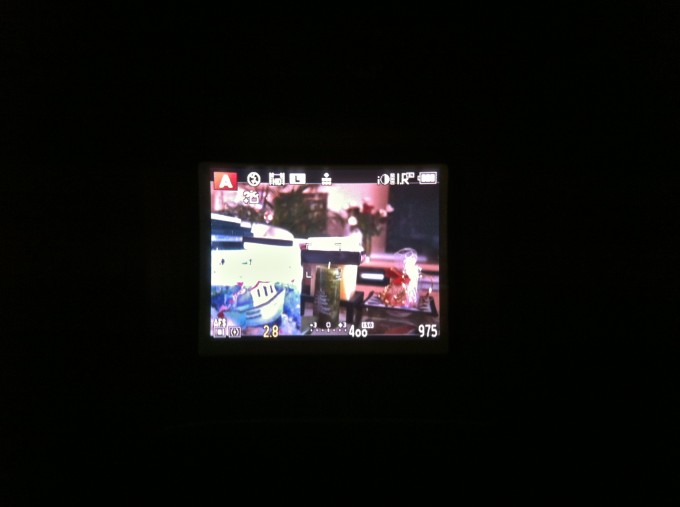
–
Looking through the new LVF2 finder on the GX1. The superior resolution of the LVF2 is mainly because of improvements to the EVF, not just the (slightly) higher pixel count of the GX1.
Handling:
The bigger, better grip for the right hand is really useful. The GX1 takes the huge range of m4/3 lenses available (including, via an extra adapter, the older, larger Panasonic/Leica lenses for the Panny L1/Leica Digilux 3 and early Olympus Four-Thirds cameras, although autofocus is much slower with these. Why use them? The big old Panny/Leica lenses offered 14-45mm f2.8 and 14-150mm f3.5 ..wider apertures than current m4/3 zooms.)
The Panny/Leica 25mm Summicron f1.4 Aspheric for m4/3 (NOT the same lens, or formula, as the Leica 50mm 1.4 Asph, but a reasonable approximation) works a treat with the higher-resolution and higher-sensitivity sensor of the GX1. Ditto the 20mm f1.7. I haven’t tried Olympus m4/3 lenses on the GX1, but they, too, should be great. The Voigtländer 25mm f0.95 also works admirably on the GX1, but – not having any in-lens stabilisation – may be more useful in dim light on an Olympus PEN m4/3, all models having stabilisation built into the camera.
In the garden, Panny/Leica Summilux 25mm at f1.6, Panny 20mm at f1.7, Voigtländer 25mm at f4, Voigtländer 25mm at f0.95 (..all unadjusted out of camera jpegs at ISO 400, except the Summilux, which has had its shadows lightened slightly).
Panasonic/Leica 25 1.4 at 1.6
–
Panasonic 20 at f/1.7
–
Voigtlander 25 at f/4
–
Voigtlander 25 at 0.95
The new, quicker autofocus of the GX1 is extremely fast: one half press on the shutter release and images are INSTANTLY in focus with all current Panny lenses; so fast that it doesn’t seem possible ..but there is, of course, plenty of computing power inside the GX1.
As with the previous GF series, pushing IN on the magnify/shrink left-right thumbwheel on playback (after zooming in) lets you click back and forth to previous and later images at the same degree of magnification – a feature of the Leica M8/9 and Canon 5DII, etc – which is handy for comparing a series of images at great magnification. No need to zoom out before moving to the previous or next image. Pressing IN with manual focus lenses, in shooting mode, magnifies the centre of the image, quicker than the double-push needed with Olympus PENs. (Magnification is automatic when Manual Focus has been pre-selected.) Pressing IN in shooting mode with autofocus lenses also – like the GF series – swaps from adjusting, say, Aperture (in ‘A’ mode) to adjusting over/under-exposure. Pressing IN again reverts to Aperture selection (or Shutter speed in ‘S’ mode). That dual-mode thumbwheel – as on previous GF series cameras – is twice as useful as the simpler, separate magnify and shrink buttons on the PENs. (But then again, with the Oly E-PL1, for example, once you’ve pressed the ‘Magnify’ button, there’s a continuous magnified view on the rear screen or EVF, whereas half-squeezing the shutter button on a Panny then drops the view back to full frame, and the magnified view disappears.)
Keeping architectural verticals vertical on the GX1 with an OM-1 35mm Shift lens and OM-to-m4/3 adaptor. Afternoon glow, 1600 ISO.
The GX1’s 4-way keypad buttons (up-down-left-right) have engraved metal icons to show which button does what, and they’re nowhere near as legible as the printed legends on the previous GF1, GF2 and GF3, though which button does what becomes instinctive after a while. It’s a real shame that the info engraved on each keypad button is pretty near invisible! Minus five for uselessness, Panasonic!
In ‘Palette’ mode (chosen on the Mode dial, offering Hi-Key, Low-key, Sepia, ‘Retro’ colours, etc) the push-IN thumbwheel allows Aperture adjustment, giving fine control over what’s in focus and what isn’t ..a real improvement over previous GFs, and really making use of that push-IN facility. However, Black-&-White has been dropped from the choice of creative colours. But ‘Monochrome’ is always available by pressing the Menu button and choosing from ‘Photo Style’ (Vivid, Natural, Monochrome, Scenery, Portrait, Custom, Standard) and each of the Styles may be varied by altering Contrast, Sharpness, Saturation, Noise Reduction to plus-or-minus two steps of adjustment each way.
This makes it far simpler to select colour, or creative, modes on the GX1 than on the previous touch-screen GF cameras, and is a small, but really useful, improvement over the original GF1.
The Voigt 25mm at f1.4 and 160 ISO, and the Summicron 25mm at f1.4 and 1600. No more visible ‘grain’ at 1600 than at 160 (but the Panny/Leica Summicron won’t focus as close as the Voigt 25mm).
–
The GX1’s handling is easier than the Olympus PEN E-PL3, which has no integral flash, and has slow and (to me) awkward menus. (The Oly E-PL1 and E-PL2 do, however, have a built-in flash, and are altogether more versatile than the E-PL3 ..in my opinion.)
The GX1’s handling is FAR faster than the larger-APS-sensor Sony NEX 5n, which has no top-mounted selection dial, so its one rear-mounted dial must be constantly reconfigured for different purposes via a Menu button, choosing otherwise by scrolling through touch-screen options. And there’s no pop-up flash on the 5n.
The GX1 has a dedicated button or dial for almost everything you may need to change quickly while shooting: ISO, White Balance, Single/Multiple/Self-timer shooting, metering mode, focus mode, aperture, over/under exposure – all without searching through menus. The beauty and usefulness of the GX1 is that everything you may want to change is instantly at your fingertips ..with four customisable buttons, and two dedicated pre-settable Customised Settings on the Mode dial, too!
Results:
1600 ISO, Panny 14-140mm zoom at 140mm, out-of-camera jpeg. Split-second accurate autofocus at maximum zoom and maximum aperture.
–
1600 ISO, Panny 7-14mm zoom at 7mm, fading light. Great range of subtle tone at 1600 ISO.
1600 ISO at sunset. 7-14mm zoom at 14mm.
–
Dusk, 1600 ISO. Excellent autofocus, maximum zoom, maximum aperture. Great range of tone without grain.
The GX1 – like the GF cameras – has no built-in steady-shot ..which the Olympus PENs do have. Various Panny lenses have optional stabilisation built-in, but not the shorter, wider-angles like the 7-14mm. There’s no stabilisation available for third-party primes, such as the Voigt 25mm or the Panny/Leica 25mm ..or, indeed, any Leica or Olympus OM or other-brand lens. Other-brand lenses which DO have stabilisation (e.g; Canon 28-300mm) may not be able to run off the GX1’s power for their stabilisation; it depends upon the contacts available within any relevant mount adaptor.
In the magic 10 minutes after dusk, 7-14mm zoom, wide open at f4 and 7mm. With a little addition of greater Definition (black and edge sharpness) and Highlight reduction in iPhoto to bring out the details of the shop window and the splash of highlight below the signpost. ISO 1600. 1/5th sec.
Man runsfor bus. Ditto. 1/4 second.
Without stabilisation you need steady hands at slow speeds in dim light. But wobble and shake are no more noticeable than with other non-stabilised cameras like the M9 or other mainstream SLRs.
Out in the garden in fading light, here are some shots at 3200 ISO with the GX1, and then the Olympus E-PL1, with the Panasonic 100-300mm stabilised zoom (with in-lens-stabilisation turned OFF when used on the Olympus!) to see [a] how in-lens and in-camera stabilisation compare, [b] to see how the GX1 16mp and E-PL1 12mp sensors compare at 3200 ISO ..all pics are RAW, at 1/60th sec. 1st the Panny, then the Oly..
GX1, blackbird, jpeg, 3200 ISO, Panny 100-300mm at 205mm f5, 1/60th, in-LENS stabilisation on
Oly E-PL1, RAW, 3200 ISO, Panny 100-300mm at 120mm f4.2, 1/60th, in-CAMERA stabilisation (not lens)
Oly E-PL1,3200 ISO, Panny 100-300mm at 218mm f5.1, 1/60th, in-CAMERA stabilisation (not lens)
In the three shots above, the stabilisation (in-lens with the GX1, in-CAMERA with the Olympus E-PL1) gives non-wobbly shots at 1/60th. Without stabilisation of either sort it would have needed about 1/200th or 1/250th to get a sharp shot. Both types work equally well (in-lens & in-camera) and give at least 2 stops’ worth of stabilisation. Notice, though, that the GX1 16mp shot is far less grainy than the two Olympus 12mp shots (all at 3200 ISO). Dim-light high-ISO noise is much reduced in this GX1 compared with the Panny GF and Olympus models.
The GX1’s little pop-up flash (Guide number 7.6 in metres, at ISO 160) has wide enough coverage to almost match the full width of the 7-14mm zoom (equivalent to 14-28mm on a 35mm full-frame camera).
Certainly good enough for fill-in flash, even at 7mm!
You’d expect that finely detailed GX1 images would not be up to the higher standard of APS-sensor cameras, or full-frame sensors, whose images can generally be cropped or magnified far more than the m4/3 pics before losing detail. Nevertheless, the variety of different lenses available for m4/3, the great low-light capability of the GX1, and the easy-to-use versatility of this Panny and its compact lenses, make it a far better ‘general purpose’ fast-focusing compact tool – for me! – than a single-lens APS, or an interchangeable-lens APS, or a bigger SLR or rangefinder.
My usual quick’n’dirty test for stability, clarity, sharpness and contrast is to shoot a set of noticeboards about 200 yards (metres) away, and to see how legible the results are. Here are the results, shot at maximum zoom with two lenses; Panasonic’s 100-300mm stabilised zoom, and a Tamron 18-270mm zoom (intended for EF-S-fit APS-sized Canon SLRs). The small m4/3 sensor, with 2x crop, means that these provide the equivalent of 600mm and 540mm on the GF/GX1 and Oly E-PL1 cameras, and about 430mm on the 12mp APS-size Canon Rebel T3/1100D. (The Panny zoom doesn’t fit on the Canon, as it’s designed for the smaller m4/3 sensor.) Without electrical connections on the Canon-to-m4/3 adaptor, the Tamron was focused manually on the Pannys and Olympus. With the Panny lens’s own stabilisation left switched on when used on an Oly E-PL1, stability was NOT achieved (the lens’ own stabiliser and the camera’s in-built stabilisation confounded each other). All cameras were on a tripod and fired on a two-seconds self-timer to avoid shutter-button shake.
All shots were taken at three steps down from the camera’s maximum ISO, to avoid digital noise.
GX1
–
CAPTION: GF1
–
CAPTION: Oly E-PL1
–
Canon Rebel T3/1100D. The 1st shot of each pair is taken with the Panny zoom, the 2nd with the Tamron.
And the winner of that rough test is.. well, it’s a very close call between the new GX1 and the original GF1! The GF1 RAW file with the Tamron lens is fractionally clearer and more legible than the GX1 pics and even the Canon with the APS-sensor.
Will I now use the GX1 instead of the GF1, or stick with the original? The GX1 is slightly easier to handle (a little smaller, but with a bigger grip), has a higher max ISO, has a slightly higher pixel count (but that didn’t mean a lot in this test) and has a FAR better clip-on EVF, far faster automatic focusing, four configurable buttons, and the handy artificial horizon.
So I’ll migrate to the GX1 and leave the GF1 & GF2 behind.. continuing with my existing stash of m4/3 lenses.
Summary:
The GX1 is easier to handle than the (predecessor) GF series, and with a great mixture of the combined features of the GF1 and GF2. Like the Olympus PENs, it has NO swing-out tilt-&-twistable rear screen, so can only be shot straight-out-at-arm’s length (via the rear screen) or with the tilt-at-up-to-90-degrees hi-def clip-on finder (bought separately).
As m4/3 cameras go, it’s very fast to use, with a great assortment of creative options, high-end lenses, high ISO and good resolution (though only slightly better resolution than the original GF1).
The many dedicated buttons for instant access to shooting parameters, without having to first press a Menu button, make it quicker to use than most compact APS-sized cameras. Enormous attention has been given to rapid ‘usability’.
The rear screen (and EVF) show what appear to be better contrast & resolution than the same pics when viewed on a computer monitor, so some tweaking (in Silkypix 3.1 for GX1 RAW pics, Viveza 2, Lightroom, Aperture, Photoshop, iPhoto etc) may be needed to bring them up to the vividness which the camera’s display appears to show.
Rear-screen and EVF magnification with manual lenses is far simpler with the Pannys than with Oly PENs. However, the Pannys (including the GX1) have no built-in stabilisation, so in dim light an Olympus may be a better option (with its in-camera stabilisation). [Note that in-LENS stabilisation must be switched OFF for best results when using Olympus in-CAMERA stabilisation!]
The GX1 gave great results with the following lenses: Panny 7-14mm, Panny 20mm f1.7, Voigt 25mm f0.95, Panny/Leica 25mm f1.4, Panny 14-45mm, Panny 14-140mm HD, Panny 100-300mm, Leica-fit Canon 50mm f1.4, Leica-fit Leitz 75mm, Olympus OM 35mm Shift, Canon 28-300mm zoom. I didn’t use any Olympus m4/3 lenses.
Autofocus is faster, and more accurate, than with many Canon lenses on a Canon Rebel T3 (also known as an 1100D in Europe) APS-sized model, and faster than any lenses on a Canon 5DMkII (though they generally have further to travel when focusing) ..and is faster and more instantaneously accurate than any comparable-size camera.
A full-frame camera – such as an M9, or 5DII – can provide softer, melt-in-the-mouth disappearing background ‘bokeh’ at normal distances than the GX1 – or any m4/3 camera – because [a] the larger 36x24mm sensor uses longer focal length lenses for equivalent shots as an m4/3 (e.g: 50mm on full-frame = 25mm on an m4/3), [b] many m4/3 lenses don’t have such wide apertures as are available for, say, the M9 (for which there are several f1.4 lenses). Note that the Panny/Leica 25mm f1.4, although having the equivalent focal length to a 50mm (on a full-frame camera) has two stops DEEPER depth-of-field than a 50mm f1.4 on an M9, because the m4/3 25mm lens – being a 25mm lens – has greater d-o-f no matter what the aperture. (The Voigt 25mm f0.9 wide open on m4/3 has similar d-o-f to a 50mm f1.8 on a full-frame camera.)
GX1 PROS:
Large range of useful m4/3 lenses and adaptors for non-m4/3 lenses
Extremely fast and accurate autofocus
Comfortable to hold, carry and use
Excellent add-on hi-res EVF (fits above the stereo mics without impeding audio)
External EVF locks in place (doesn’t slip out, as on previous Pannys & Olympus)
Built-in flash and also dedicated hot-shoe for external full-size flashgun
Higher ISO than previous models, up to 12,800 (but, realistically, 6400)
RAW and .jpeg files
Double-action thumbwheel, like previous Pannys, providing Aperture adjustment in various modes
Easier access to ‘creative’ functions than GF series and Olympus models
16mp sensor
GX1 CONS:
Engraved metal keypad buttons have almost INVISIBLE legends
Compared with Olympus m4/3 models – no in-camera stabilisation
Presently no external stereo audio input for video (might evolve as clip-on accessory)
For a little micro-four-thirds ‘system’ camera, with many different lenses to choose from, the GX1 is the absolute best value available today (though things change month by month, of course) unless you’re likely to need the in-camera stabilisation of Olympus models for shooting in very low light, say at wedding parties. But for those, you should be using a camera with a bigger and more sensitive sensor anyway!

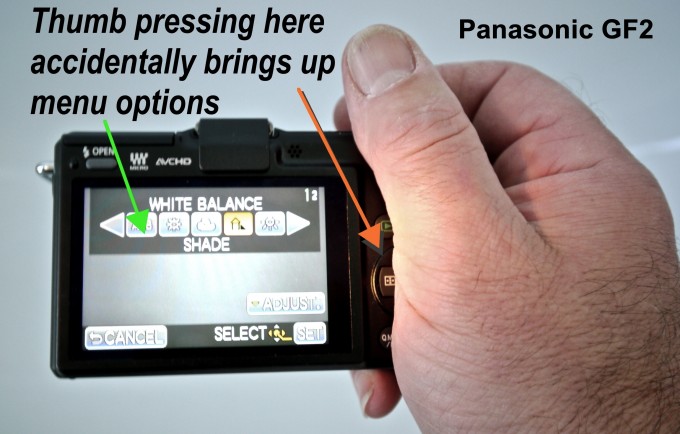
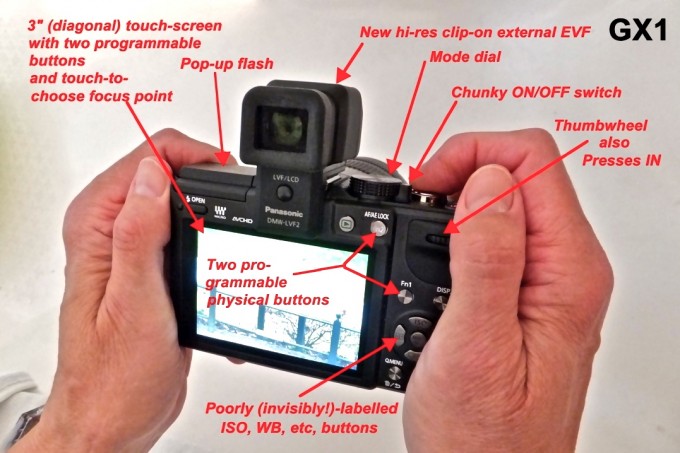
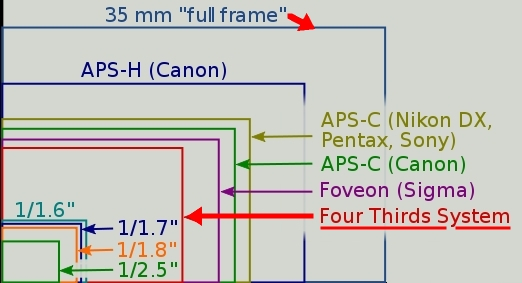
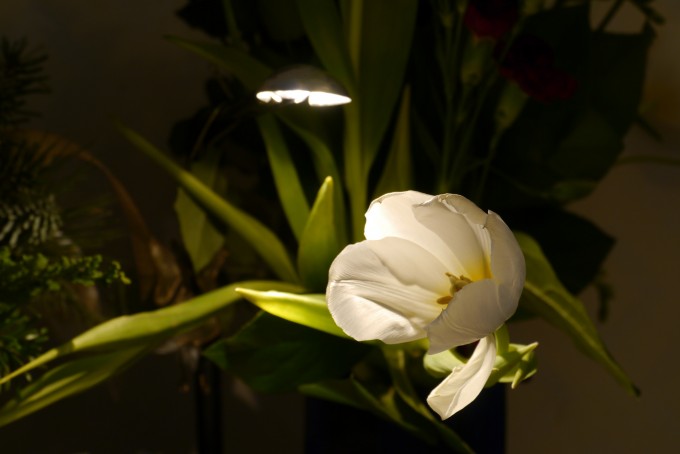
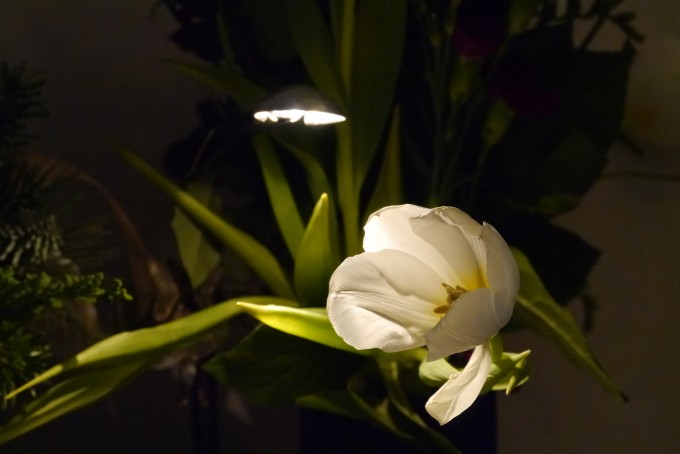
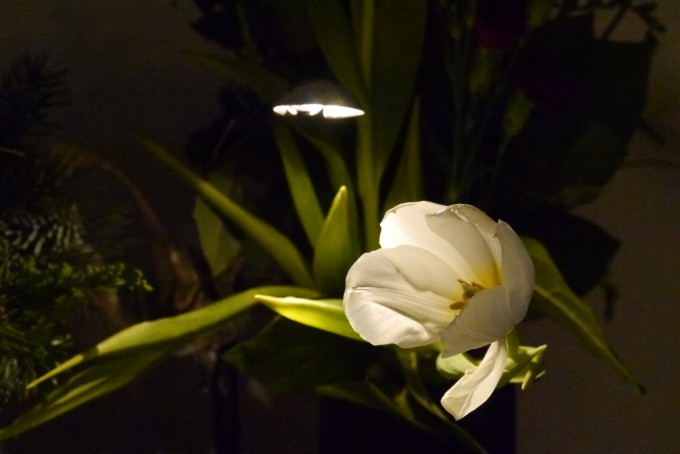
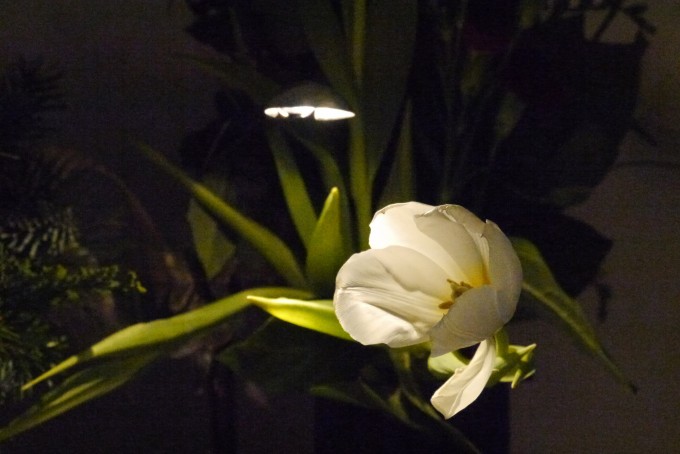

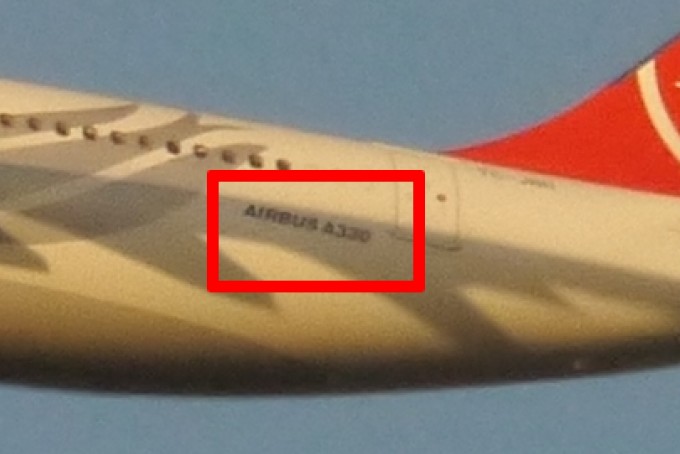
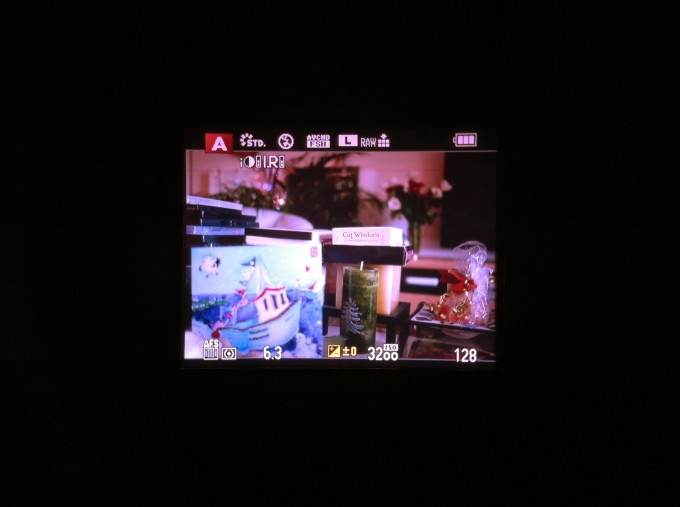
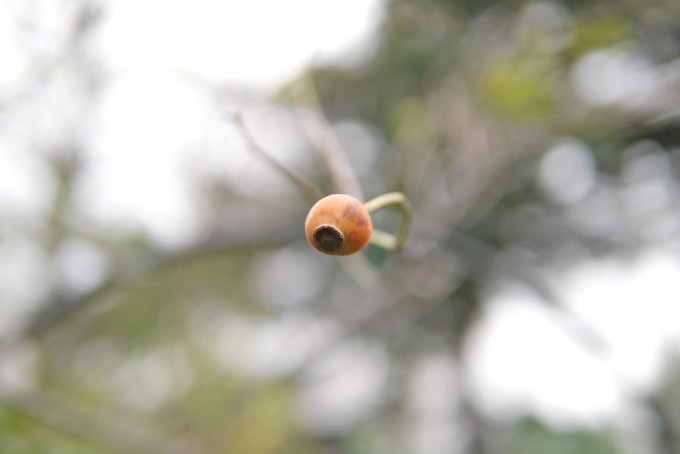
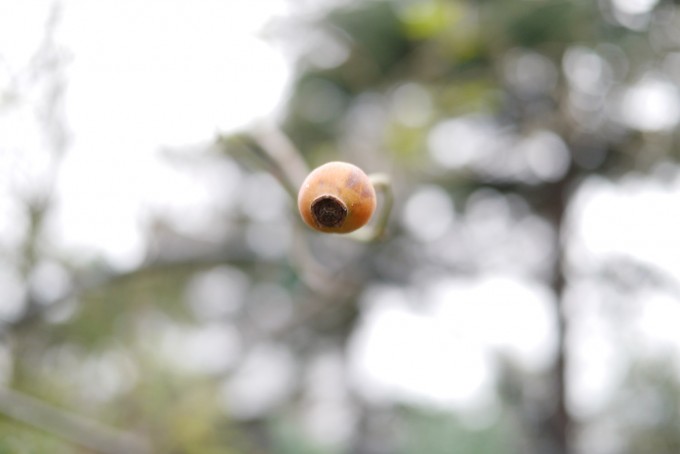

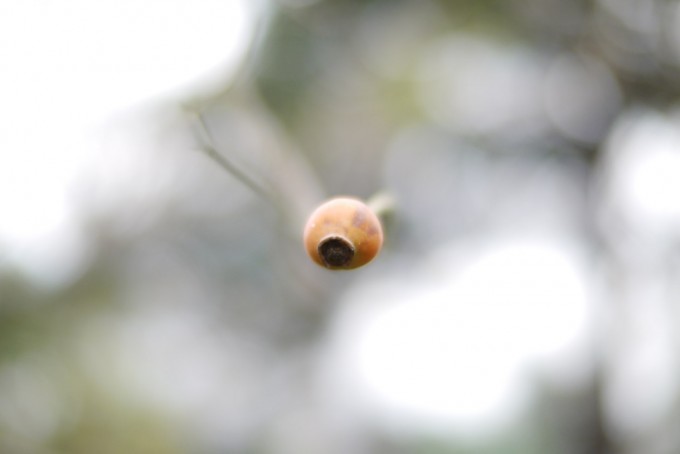
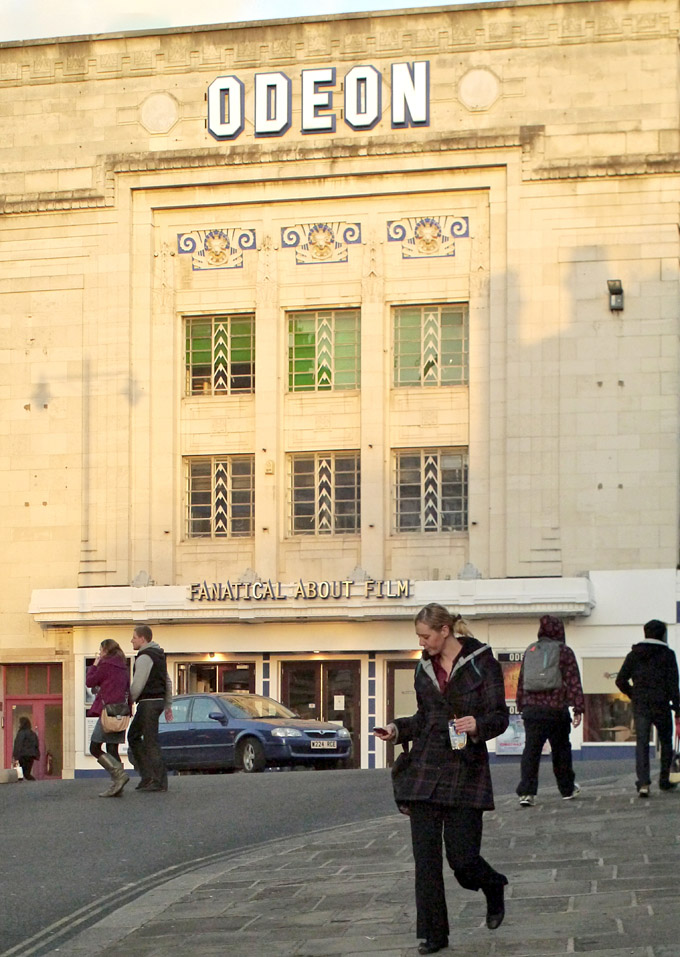


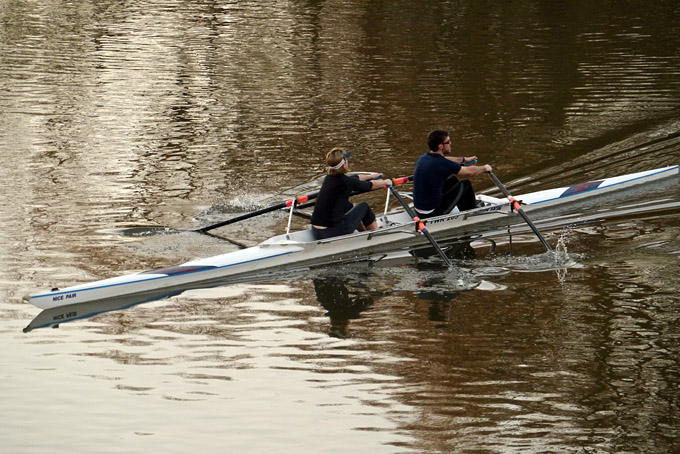
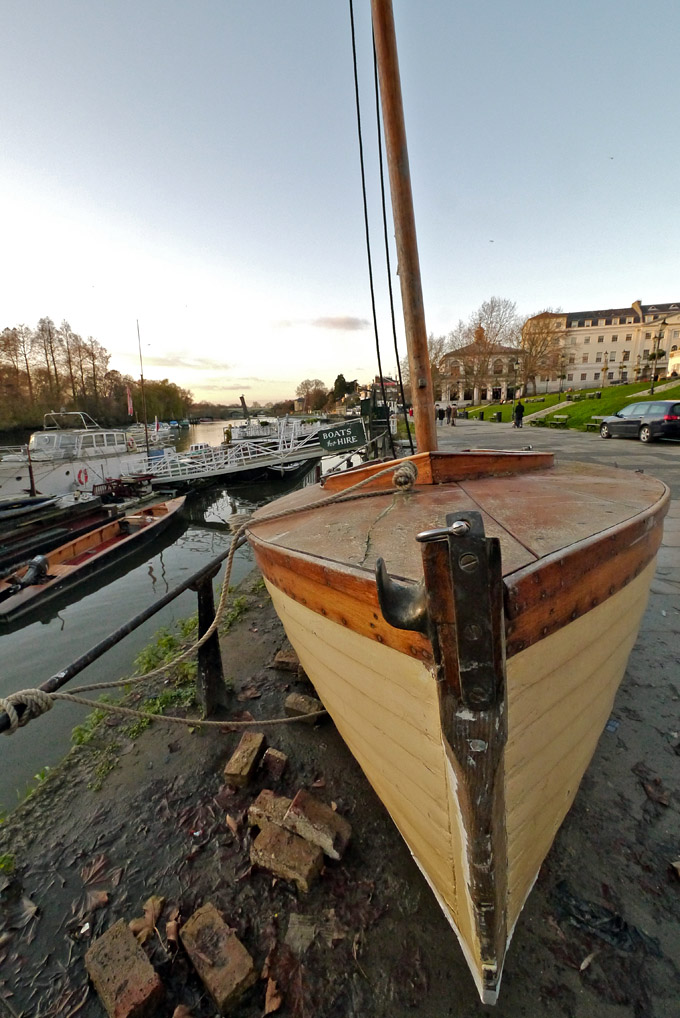
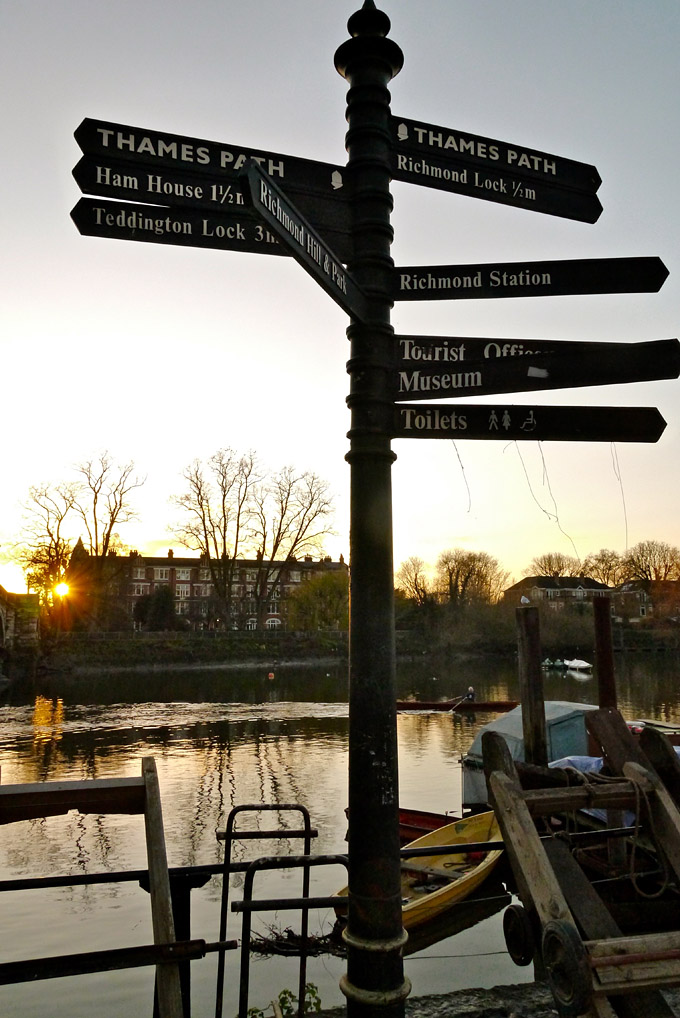
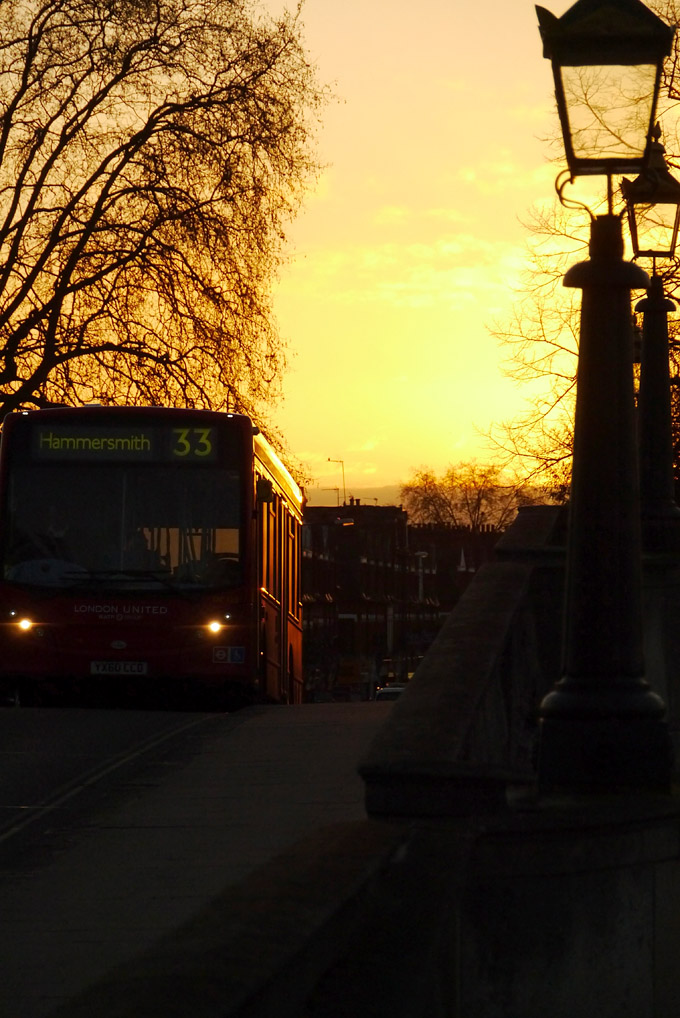
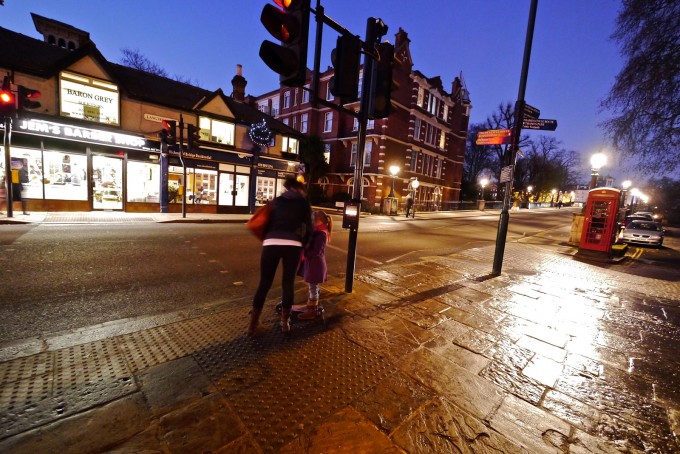
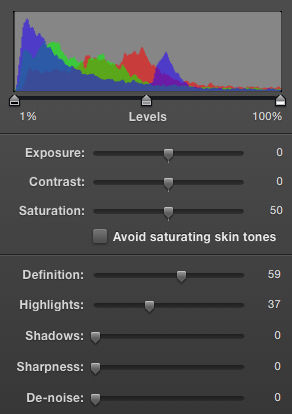




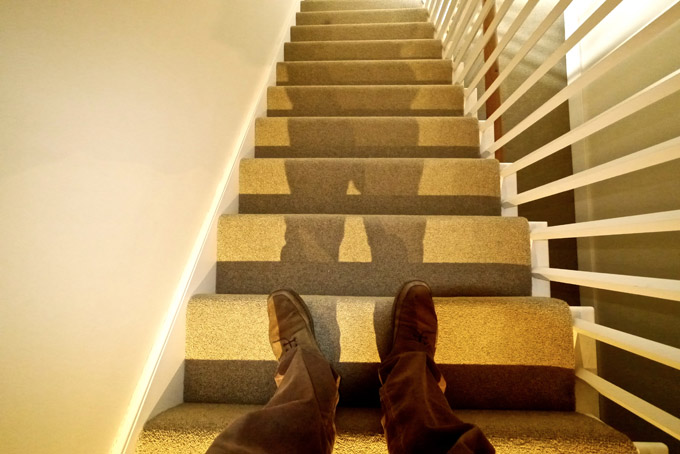

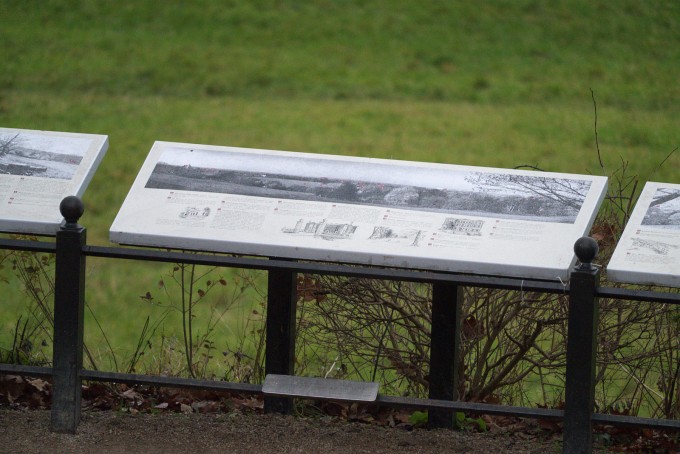
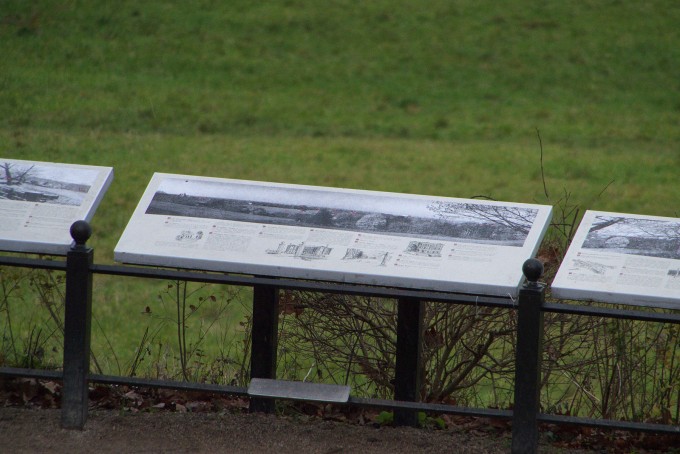

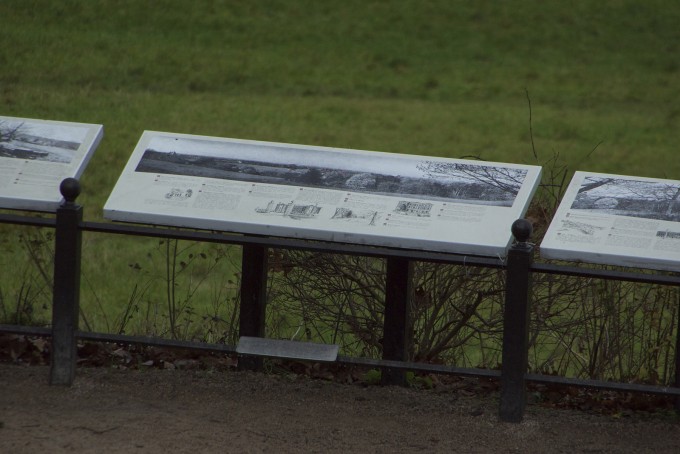
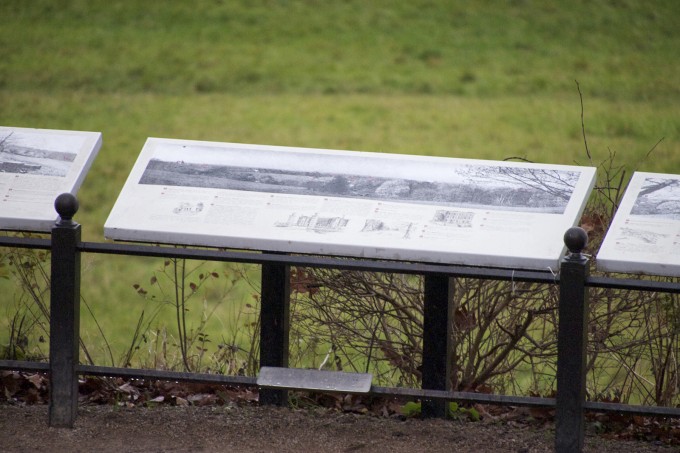
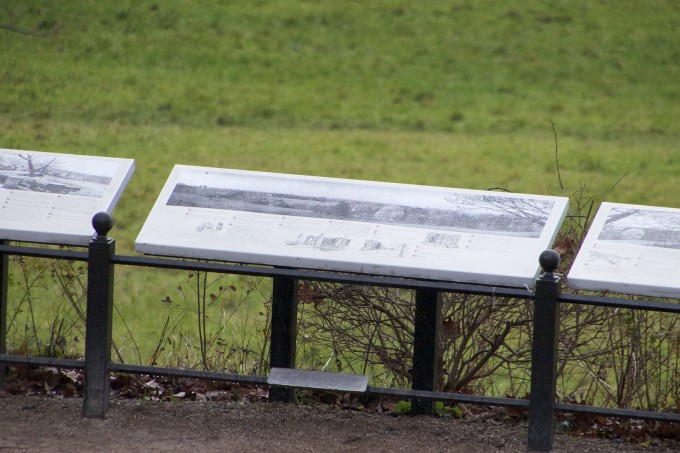
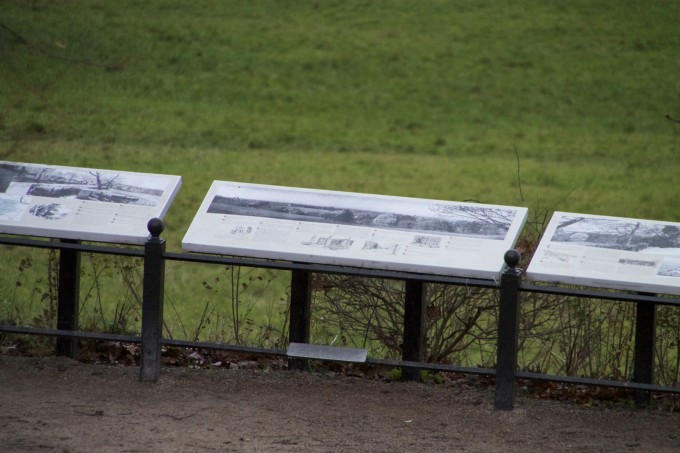

Had this camera for about 10 months. Always thought I couldn’t zoom in on playback, then go next/previous through my shots, like I could with my previous camera. SO glad I found out about this here. I disagree about the near invisible keypad buttons though- I can see them well enough… and it only takes a day of shooting before you know the layout of them by memory, anyway. Thanks again!
Exactly where does one acquire everything that information regarding david babsky ?
I am just producing an article on that will i
am just having problems locating things on the web about it.
In case you may help me personally for this 1 i might considerably obligated
Regards Trisha
How the bleeding hell did you take so many decent motion shots with this? For me I can’t even take a picture of my cat licking itself without it blurring into an incomprehensible mess.
I do not know whether it’s just me or if perhaps everyone else encountering issues with your website. It appears like some of the written text in your posts are running off the screen. Can somebody else please provide feedback and let me know if this is happening to them as well? This could be a issue with my internet browser because I’ve
had this happen previously. Kudos
Never heard of this happening and all is good on my end. No one else has complained to me at all about this.
I’ve been spending a lot of time researching my first MFT camera (originally a Nikon D5100 user) and I have to say that your review of the GX1 is the best out there. Thanks for taking the time.
With that, I was hoping to get some advice (readers are welcome to chime in).
With all the hype over the Olympus E-PL5 having “the EXACT same sensor as the E-M5”, I can’t help but pay notice. As of this, the difference in price between the GX1 and E-PL5 (body only) is $200, which begs the question: is the E-PL5, with it’s legendary E-M5 sensor, $200 better than the GX1? From what I’ve gathered, the E-PL5 is slightly cleaner at ISO 800, and significantly cleaner at 1600 and higher compared to the GX1. OOC JPGs are clearly more delicious coming from the Olympus. Add to that the aforementioned IBIS and it seems that the E-PL5 is the clear winner.
Well, not exactly. I’m dreading the miniscule control buttons (and lack thereof), as well as the extensive menu-diving required of the Oly in order to invoke full manual control. That flipover screen is completely juvenile to me, and the IBIS is only rated good up to 1 stop.
But then again, there is that luscious E-M5 sensor. Travesty that Olympus put such a good sensor in a camera that is as awkward functionally as visually.
I am convinced that the GX1 is the sensible MFT choice for the DSLR photographer, while the E-PL5 is more of a point-n-shoot with a superior sensor. Can I live with the GX1 knowing that Sarah Facebook down the street with her E-PL5 can produce cleaner images at ISO 1600 and more brilliant colored OOC JPGs than me with my GX1? Is it worth saving $200 only to have to spend more time in Lightroom to get the GX1 RAWs up to par with the E-PL5 JPGs?
Thanks for reading.
Can I just say what a relief to discover somebody who actually understands what they’re discussing on the internet. You definitely know how to bring an issue to light and make it important. A lot more people ought to check this out and understand this side of the story. I was surprised you aren’t more
popular because you surely have the gift.
Hey! Would you mind if I share your blog with my zynga group?
There’s a lot of people that I think would really appreciate your content. Please let me know. Thank you
What do you mean by “share”? You can link to it but not copy the contents and past them elsewhere.
Hi, just wanted to say, I liked this post. It was inspiring.
Keep on posting!
I know this is sort of …weird, but how do you disable the self-timer? i can’t seem to find a way to do so. thank you!
The DOWN button selects the drive mode, which comprises the TIMER and the AUTOBRACKETING and the BURST and SINGLE exposures. (:
Fantastic in depth review…So, would a GX1 with a 20mm 1.7 keep me happy after passing on
the x100 and x1?
Hallo Steve, everyone…….
I read with great interest your site, and I have to say the review is the best by miles. I am serious.
You put your verdict into perspective of everyday life, and explain clearly the reason behind your verdict….which is very honest, unbiased and makes perfect sense for me to understand.
I am a newbie to camera (don’t get shocked), I am 35 years old and I have never owned a camera in my life. (All my previous experience of camera is just using outdated models of Point & Shoot and mobile phone camera)
I got a 1.5 months old baby now, and thought it is a perfect time to reward myself with a decent camera within my budget to capture some moments.
I am going to have quite a long list of questions. I hope you guys can tolerate with the stupidity and long questions, bearing in mind I am probably the guy with the least knowledge ever to post here.
I am interested to buy Panasonic GX1 two lense package (kit lense 14mm-42mm and prime lense 14mm with 2.5f). The cost after converted to USD will be equiv, to USD 775.
I read in details of the comparison to EP-3 and understood the pros and cons, and decided to go ahead with GX1 due to my love of interior design photography (which I believe a low light performance is important)…and also choose GX1 because my wife loves the design.
Alright to cut my long and boring intro short, here’s my list of questions –
1. I see that in the review here, the numerous Voigt lenses and Panny 7mm-14mm lenses are used.
Am I getting a decent lense in the 14mm with 2.5f?
I have limited budget and for the time being will not have additional cash to purchase other lense.
2. One of my friend tells me that the best bang for buck for me will be Panny LX5, it costs equiv. USD 405 here. It is known for good image quality due to the 2.8f.
But if I am using GX1 with 14mm 2.5f vs. the Panny LX5, will I be getting a much better image quality in all conditions? (taking into considerations of LX5’s smaller image sensor, while GX1 uses similar to G3 sensor, which I understood is of better performance and at the top of Micro 4/3 range).
3. I was also keen with Sony NEX C3. With two lense (18mm – 55mm, prime 16mm with F2.8) the price is equiv to USD 677.
This looks like quite a good bargain when compared to GX1 USD 775.
Furthermore C3 has bigger APC-S sensor and marginally better lowlight performance?
(I used the Imaging Resource website’s ISO tests comparison as a guideline in their review of GF2, which compares to NEX-C3 and also Panasonic G3, I read other sites and understood the performance of GX1 and G3 will be very similiar).
– In good light conditions, how do you compare C3 vs GX1 in terms of JPEG and RAW.
(I saw your other review of C3 vs EP-3 and found that the colour of C3 is not accurate)
4. What about comparison of DSLR entry level models to GX1.
Canon EOS1100 costs USD 512 equiv. here with 18mm – 55mm only kit lense
Nikon D3100 costs USD 580 equiv. here with 18mm 0 55 mm only kit lense.
If I am to do apply apple to apple comparison, GX1 with 14-42mm kit lense only will cost more at USD 612.
– How do you compare lowlight performance of GX1 vs EOS1100 vs D3100?
– How do you compare good light condition of GX1 vs EOS1100 vs D3100?
My heart is already with GX1, I am trying to see if the choice of GX1 really makes sense.
5. And lastly, my final question (hopefully :))
As you know I have budget constraints, but yet I also love wide angle photos. I would love to take interior shots,…. shots on streets with building with wide angle and so on.
As I understand, wide angle lense is going to cost massive.
Due to my limited budget, I intend to buy Panasonic’s Wide Angle Convertor 0.7.
– By using a convertor, is there a huge compromise to the image quality if I use the 14mm 2.5f lense or 14-42mm kit lense?
– Can you please describe in details what type of compromise I will be facing if I use Wide Angle Convertor?
PS – Steve, I am sorry I can’t buy my camera via BH, because I come from Malaysia…
(Its one of the countries located in South East Asia).
Regards –
Chow
A bit late to the party, but here’s my take…
I haven’t tried any of the sony nex, but my previous camera was an entry-level sony alpha a100 bundled with two kit lenses.
I bought my GX1 just before the Olympus OM-D launch because of time constraints (a trip in april 2012).
Along with the camera, I bought the panasonic 14-42mm X powerzoom, the panasonic 20mm 1.7 and the olympus 45mm 1.8.
Despite the sometimes unhelpful autofocus even in bright lights (which I’m unable to assess in the backscreen), I don’t regret leaving the Sony Alpha DSLR back home.
The diminute size makes all the difference for me.
About wide angles… You may be able to achieve a similar effect with any lens you’ve got mounted. If you take care with the exposures, you can stitch photos on your computer using free programmes.
One basic such programme is the free Microsoft ICE.
If you are satisfied in having only the kit lens, I’ve read many reviews praising the Sony RX 100, though it’s not necessarily cheaper than the options you’ve been pondering about…
And last but not least, I must confess that I shoot only JPEGs… Despite having Adobe Lightroom installed and being a long-time acquaintance of Photoshop, I’m quite satisfied with the exposures I manage to get after somewhat-carefully setting the camera.
And for this, the plethora of easily accessible manual settings the GX1 provides is unsurpassable! (:
The thing is, my photos are mementos intended only for me. I don’t have art-producing aspirations, and so I don’t spend much time with exposure minutiae — be it before the click or after the click, or “preprocessing” and “postprocessing”.
In theory, RAW is unbeatable, but it also makes so much more painful to back it all up and increases the risk of running out of card space whilst on vacation… (:
Best regards,
Edson.
PS: thanks for the excellent review, Mr. Babsky!
You’re welcome, Edson!
Love grey ! not too formal and still low a low key colour. With a nice Olympus Zuiko lens on there what a beauty !
Yes, I believe they can, or perhaps it’s an available option in the Quick Menu.
I only just got my GX1 a couple of days ago and have had very little time to fiddle with it, but I’m sure I saw this option.
Good little camera BTW. Unfortunately the guy at HK Airport gave me the grey-body version when I really wanted the all-black. Found out too late. Now I’m trying to convince myself that the grey version is really funky. Please someone, tell me it’s really funky.
Yes, it is! 🙂 (Replying and therefore encouraging five years later, but anyways 🙂 )
.
No ..the electric zoom’s available only via the button on the zoom.
Great review! Can the user-programmable function buttons be maped to zoom-function? As a complementto the button on the powered lens..
“As with the previous GF series, pushing IN on the magnify/shrink left-right thumbwheel on playback (after zooming in) lets you click back and forth to previous and later images at the same degree of magnification – a feature of the Leica M8/9 and Canon 5DII, etc – which is handy for comparing a series of images at great magnification.”
Is this really considered a special feature to mention? Even my very old Canon G10 does this. Seems like a logical feature for all camera’s to have. Are you saying Olympus doesn’t include this feature in their PEN line? If so, that is pretty weak on Olympus’ part. Maybe I am spoiled by owning Canon products, which all seem to have this (also available on my 60D).
.
“..Is this really considered a special feature to mention? Even my very old Canon G10 does this..”
Yup, Canons do it, Pannys do it, Leicas do it, but not many others.
“..Maybe I am spoiled by owning Canon products..” ..no, not spoiled; we just take it for granted that every other camera has it, but the PENs don’t. Shame, isn’t it?
Thank you, David! =)
.
You’re welcome, Rolf! I hope it was useful.
I wonder why you think the GX-1 represents the best value when in fact it is an EVF less G3 and sells for more than what the G3 does.
.
The G3 is a bulkier camera, with its EVF always there whether you want it or not, it has fewer direct-action buttons on the back to instantly change its settings (9 instead of the 11 on the GX1, apart from the EVF/LCD button), it looks bigger and perhaps more intimidating to people who are having their picture taken, the G3’s large fold-out screen intrudes more into the “grip” area where your right thumb needs to grip the camera.
The GX1 is more discreet, smaller, has higher maximum ISO, a better “grip”, and has quicker selection of functions plus two extra assignable Function buttons.
All good and perfect, how does it represent a better value though?
The GX1 is a stripped down G3 (ok, it does have one additional stop of unusable high ISO on its menus) yet costs more. Add an EVF – for those special moments when you do want it – and it amounts to a $300 or so price difference.
P.S.
I always want the EVF. The LCD is only used when shooting at weird angles or when the camera is mounted on a tripod. YMMV.
P.S.P.S.
Give me better ergonomics and a nicer EVF and I wouldn’t mind losing the LCD.
Real men shoot with the cameras pressed against their face (and in Germany they pee sitting down 🙂
P.S.P.S.P.S.
If your subjects are intimidated by the G3, maybe it has nothing to do with the camera?
That said (and of all the above), I wouldn’t mind more assignable buttons. I agree with you there.
.
When I’m in Germany I do not pee sitting down ..but a friend of mine does – his wife insists!
Actually, real men shoot from the hip, without looking at any kind of finder. And real men set focus instinctively, without needing any kind of finder.
The GX1 is also in a metal-shelled body. The G3 is all plastic. That in itself does justify some of the expense difference for me.
What’s with the colors. Indoors, all yellow even with flash. Very flat colors to my taste and the sky has way too much magneta.
Panasonic colors are an acquired taste… it is possible to get reasonably good results from Panasonic cameras but that requires some tweaking or post processing.
i recognise that dull weather…must be english winter time! greetings from down the road in windsor…
.
..or, as you might say, “up the river in Windsor”, Robert!
Mmm, it’s blustery today ..and just the weather to get blown around the park, shouting “Fenton! ..FENTONNN!!!”
?!
What are your views of the kit 14-42 lens ? Would you suggest another lens?
.
Well, I gotta go and fix someone’s computer right now ..but, in the words of Arnie Schwarzenegger, “..I’ll be back!” ..Later..
.
Well, true to my credo, and JohnM’s, above, I can’t comment on the usual 14-42mm, nor on the latest Power Zoom version, as I haven’t used them. I have – and do soemtimes use – an older 14-45mm which came with the original GF1, and so I’ve bought other G bodies WITHOUT bothering to get their kit lens ..why bother to get a 14-42 when I already have a 14-45mm?
So I can’t tell you anything about the 14-42mm, neither of them, but I can say that the earlier 14-45mm is a great little kit lens (..I often test lens sharpness and contrast by shooting the bar code on a film box from across the room!..) except that its range is just a bit too short for me ..it’s equivalent to 28-90mm on a ‘full frame’ camera, and I want a bit more “reach”. So I normally use a Panny 14-140mm lens on an m4/3 camera, which gives equivalent “reach” to a 28-280mm on a ‘full frame’ camera. And to complement that – as you’ve seen in this article, above – I also use a 7-14mm Panny zoom.
Together, those two lenses give me the equivalent of 14mm to 280mm on a 35mm film or ‘full frame sensor’ camera. Just two lenses ..for 14mm to 280mm.
So if I’m sightseeing, I can take a very wide angle view, or a close up of a distant chimney-top ..with just those two lenses.
[..Just to wind up fellow M9 owners, I’d need – count them – a Voigt 15mm (or Leica 16-18-21mm), a 21mm (I use a 24mm), a 28mm (I generally use a 40mm), a 50mm, a 75mm, a 90mm, a 135mm, a 200mm ..and I still couldn’t get anywhere near 280mm ..except that the M9 picture quality is so good that I could crop the 135mm to look like a 280mm. So that’s, er, eight lenses to carry (and to buy, and to juggle and drop!) to get something approaching what I can get with TWO lenses on an m4/3 camera such as the GF1 or GX1..]
But those two Panny lenses have apertures of f4 (the 7-14mm) and f3.5-5.6 (the 14-140mm). So if I want to blur away backgrounds I’d need a wider-aperture lens or two ..unless I’m shooting something fairly close to the lens. I prefer the Panny 20mm ‘pancake’ f1.7 to the bulkier Panny/Leica 25mm f1.4 (see the four pictures of the flower head in the article, above) ..but feel free to take your pick from whatever seems right for you.
(I also have a Panny 100-300mm lens (equivalent to 200-600mm) for those really distant shots, or for when I want the “piled-up” perspective which comes with a very long lens. Note, though, that the plane shot, above, was taken with the 14-140mm at 140mm; I didn’t need the 100-300mm for that.)
So I’d suggest 7-14mm and 14-140mm. But it depends on what you like to shoot, what your budget is, and what makes sense for YOU.
Does that give you any help..?
A thoroughly thorough response wow. Thanks Arnie 😛
I love the low light above all things this is my thing,budget wise Im limited seeing that I am new to the M 4/3 system.With your help I am now pretty much convinced that I will invest in the GX1 to use as my base to build on. Also I have half an eye also on upgrading my 350D Canon to a 5D II. Hopefully at the end of the day I will have a couple of great systems.
I know so far that I would love the 20mm1.7 Pancake.It being a nice 40mm equivalent walk around lens. The two zooms you suggest really do cover a lovely range. I will look into it in more detail.
Hmm price wise I think both those lenses you suggest will need some extra coins in the piggy bank. the GX1 with the pancake will have to do for me now and will use the my feet to zoom as much as possible.
Regards
.
Hmm ..”zooming with your feet” isn’t really possible when you want to get a very wide view, of course, because no matter how far back you go, you’ll only ever get the view seen by the 20mm (40mm) lens. But it’s a good start, because it lets you shoot shallow depth-of-field if you want to (see the ‘bud-in-the-garden’ pics, above) but also deep d-o-f if you choose. So that’s a great choice!
And I hardly use my 14-45mm nowadays (28-90mm) so, when I get back from my trip, I could pop it in some bubble-wrap and send it to a nice new home, chez Frakus, as a Christmas present! Then you’ve got a 90mm as well!
350D to 5DMkII is a great leap forwards! But you’ll need to get some good lenses for that 5DII (..alas, any EF-S lenses won’t fit, as they’re designed for the smaller sensor of the 350D). The 5DII deserves wide aperture lenses, for shallow d-o-f, but that means more expense ..unless you can find really good quality used ones.
Note that the normal working range of ISO on the 5DII ends at 6400 (though there are two more “Hi” settings (12800 and 25600 or thereabouts) ..and the normal working range of the GX1 ends at 12800 (though 6400 is normally the highest usable choice), so the ISO of the GX1 and 5DII are a great match for each other, though the 5DII gives a smoother finish, always.
Best of luck, and if you send me your address, via Steve, in two or three weeks, I’ll send you a 14-45mm as a Happy New Year treat!
Cheers – David.
Well all I can say Is 🙂
That is quite some generosity.However I live in Greece and I’m not sure its worth your while even sending it..I appreciate very much your gesture. (Any who see what the cost involves and let me know and I could even cover that side of things and make a contribution towards your gift.any other way and it just wont seem right)
The (40mm) looks like it produces lovely dof images. Nice and small and It will definitely stay on the camera for long periods of time for street and indoor photography.
So with the 5DII I always had the FF in mind from the time I purchased my 350D and EF-S lenses I avoided from the outset. Were going off your original post here but I have some nice glass, not great but good enough I think.But let me see how I get on with the GX1 first and if I enjoy it that much the EOS may just slip out of the picture.
Thanks Very much again
Kind regards
.
Well, I’ll be in Greece in June, I think ..but that’s 5 months away!.. teaching photography in Skyros, I mean on Skyros Island, as I do each year ..I can hear Bob Bowné (..and others!..) laughing from here!
I could send it, via friends, to Skyros in two or three weeks, and have it sent on to you from there, as long as the Greek Postal Service won’t, erm, “disappear” it!
Maybe we can find another way, otherwise best of luck with your intended GX1 ..and (possibly) intended 5DII..!
Yassas!
Efkaristo poli mate ! Will be in touch.
Ooh Skyros very nice. need to put that on my to do list.
Yassas File
Your in the UK I had in mind your from the US I dont know why.I have info overload also my mind is mush.
Cheerio
Very nice informative review. Thank you !
.
You’re welcome. I do put a bit of thought into it .. it’s not all imagination, make believe and mis-information!
All the other things is not relevant when the colors of Panasonic looks like this.
I have a GH2 system and before I had GH1.
Panasonic don’t know to handle colors.
Compare is to G10, D7000, even my old 5060, the colors are really ugly.
Excellent review. One question though, and this is what bugs me regarding the GF2: can you completely disable the touch screen focus? Not a fan if the touch screen at all!
.
I can’t remember about the GF2 ..I think you can disable the touch-screen AF.
With the GX1 – which is what this article’s about – YES, you can disable the touchscreen AF, you can disable the ‘Touch TAB’ (which slides out onto the screen to offer touchscreen shooting plus two extra Function ‘buttons’), and, if you want, you can completely disable the touchscreen altogether (three separate options to switch on/off Touch AF, Touch TAB, and complete Touch OFF).
Sorry that I can’t remember all the options on the GF2.
Nice article David, The GF1 was a excellent camera and it looks like this is a worthy upgrade!
.
Now there speaks a true gentleman. I rubbished the love of DJDLV’s life (the Leica X1) and DJ returns by paying me a compliment!
It’s all about what floats your boat (see pics above). If you love the X1 – as I know you do – then who am I to disparage it? Long may you get pleasure from it!
And the GX1 is, indeed, a “worthy upgrade” ..but no-one should feel obliged to upgrade if they’re happy with what they have. In essence, the GX1 gives you an extra stop of ISO. Otherwise, apart from a better external finder, and higher resolution video shooting, I’d say “stick with a GF1 and get the most out of what you have”. There’s ALWAYS an upgraded car / computer / camera / caravan just around the corner. And then, suddenly, a model from 40 years ago becomes appealing, and everyone wants ‘retro’. Or a ‘toy’ lens. Or a 120 roll-film camera with a plastic lens.
Isn’t fashion weird?
Thanks for the post. I am in the market for m4/3 so this helps out.
.
Great ..that’s what it’s all about. Glad to have helped!
I alzo have a gf1 Smith 6 lenses but im vera happy Shooting my x100 i don,t want to go for a NEW camera every 2 or 3 years.im atino Washington for nikon to vive us. D800. My money is there and i want to keep it simple and spent my money ON film.
Greg
.
Posted in a train ..on an iPhone, Greg? ..I mean “..in On Uphon. Grag!..”
But spending money on film ..that’s a GREAT idea. I’d be happy to treat you to a few rolls of XP2!
– Cheers, David.
I think there is a certain level of camera that is good enough that you can’t really go wrong with it. With the pancake zoom lens, you get a lot of versatility, but pretty much the same could be said for the G3, and it is several hundred dollars cheaper. Both of them seem to have a slight green cast, but that is A LOT easier to fix than an out-of-focus picture.
My problem is that my current cameras are still working fine, and the big camera companies seem to be inventing something new every few months. I keep waiting for my old Nikon to break…
Wish I could do the same as you. The old Nikons are as good or better than most of the new cameras the producers are constantly pouring out.
.
Sorry; you’ve bought the wrong brand, Dave: old Nikons seldom break! ..Now if only you’d bought a Russian Zenith you’d be able to get a new camera right now!
David, Thanks for the great article! As one of the early buyers of the GF1, I have waited a long time for a worthy successor, which now may finally have arrived.
Due to the praising reviews of the NEX-7 (among others, of course also Steves fantastic rating) and the bigger sensor, I thought a while of changing from m43 to the NEX system (especially before the GX1 was announced). I just would like to add a few points regarding the differences, that are not really accentuated in the comparisons I have read until now. Nevertheless, these differences have become crucial to me to stay in m43:
– The camera bodies of the NEX may be definitely smaller/thinner, but for me the whole camera with lenses counts. In many reviews (not in yours) alway the body size is compared, but who can make pictures without lenses? m43 is in my eyes much better in compactness when comparing the whole system (especially with the pancakes). To me, the compromise between sensor size (should be huge) and lense size (should be small) of the m43 systems seems to be more balanced.
– Sorry to say it that direct, but it was just a huge dissapointment when holding the standard zoom of the NEX series in my hands for the first time: It just felt like cheap plastic, and this feel-and-touch was actually one of the main reasons not to change. This is of course a very personal thing, but I definitely prefer the (of course also plastic) basic Pana lenses. Regarding the Zeiss for NEX or the Voigt for m43 (which I also own), that does of course not apply, but who can afford all types of lenses from the premium lines? Most people also need affordable basic lenses, e.g. travel zooms.
– Both touch focus and especially AF tracking in video mode is an big issue for me, as I often shoot completely unpredictable models like my little son. The focus hunting of the GF1 (and most other cams in video mode) is such a mess, so I really need to have a solution in this field, also. While touch focus in video mode is included in the GX1 for sure, I can just assume that it also has the same AF tracking functionality than the G3, which should be very reliable. I never read a real specification for the GX1 about that, can someone of the new GX1 owners comment on that?
A shame Panasonic did not implement the viewfinder into the body, than I would presumably be completely happy with a GX1. Lets see what GX2 will show up with 😉
These are just a few – very personal – thoughts from a GF1 owner, why to stay in m43 instead of changing to another system, so they are far from objective thoughts. Nevertheless, these things became decisive to me and maybe they could be helpful for someone else…
Greetings from Leica-land Germany,
Stephan
PS: Steve, great site! I really became addicted and visit it nearly every day for quite a while now…
.
Well, I’m off to Leica-land Germany tomorrow (..including calling in at Leica to see another Stephan, or rather Steffen, to see what’s happening with my M9..) but before I go, I’ll check the (improved) video focusing of the GX1 again.
But in the meantime, maybe Bob Bowné would like to give you his opinion, as I’ve got some packing to do..
.
Bob doesn’t seem to have replied, so here’s what I can tell you so far: I haven’t tried this in bright light outdoors (haven’t had a chance since yesterday; I’ll try tomorrow) but in INDOOR light the auto-tracking AF works “sporadically” ..and that’s with the video-intended 14-140mm ‘HD’ lens.
It tends to jump, rather than do smooth ‘follow-focus’, and there’s a continuous very faint scraping noise as the focus attempts to see what’s happening, or “hunt” for correct focus ..and that faint scraping is, supposedly, as quiet as Panasonic can make it (..you wouldn’t really notice it with plenty of noise around you..) because this lens was intended especially for shooting video, not just with m4/3 stills cameras, but also Panasonic’s “professional” (more like semi-professional) AG-AF100 video camera.
So I’ll try in brighter light outdoors, but INDOORS I’d say the contrast-based Continuous, or Flexible, AF just can’t cope. Don’t forget that this is a bigger chip (m4/3) than normal amateur camcorders, so focusing has to be more accurate, and that’s a lot to ask of a camera which is really meant for shooting stills!
David, Thanks a lot for the quick test! Don’t know if I should be happy now that focus tracking is possible in video mode or instead be dissapointed about the practicability which apparently seems to leave some room for improvement…
Hope they took good care of your M9 in Solms,
Stephan
.
I haven’t had a chance, after all, to check the tracking OUTDOORS – and it’s getting dark now – so I’ll try again tomorrow – I’ve been busier than I expected these last few days. But it may be more successful with a proper video camera (with a smaller sensor). I’ll try to post again tomorrow after some thorough checking.
“..Hope they took good care of your M9 in Solms..” well, we’ll see; I asked them to adjust it so that it matches my M3, but they’ve been waiting till I arrive to make any further adjustments..
.
Noo, the tracking doesn’t do much. I’m using a 7-14mm wide-angle zoom and a 14-140mm tele-zoom (not wide aperture primes). With both lenses set to max aperture f4, there’s very little adjustable depth-of-field – or ‘focus tracking’ – and it’s a bit jerky anyway.
It’s nowhere near fast enough for following children (not at 160 ISO, nor 1600 ISO), and just slowly jerks between, say, 3 metres and 7 metres.
You certainly can’t get any sm-oo-oo-oo-th follow-focus effect. Hollywood uses a separate “focus puller” person to adjust focus by pre-determined measurement, or else the camera-person adjusts focus manually through the ‘finder.
It might work with a very wide aperture ‘prime’ – like the Panny/Leica 25mm f1.4 – but I think it won’t be anywhere near fast enough for what you want to do. Sorry!
You’re right: as you say, it “..seems to leave some room for improvement…”
JohnM…if you follow this site regularly you will see many interventions from mr. Babsky, most of the time counter current opinions, often supported by poorly framed and/ or exposed shots… But he is still an entertaining character we could not live without. The nice thing is that Steve does not edit those posts, leaving you plenty of opportunities to bring your input to the table… Who wants to read steve’s aka leiCaNikonPanaPen fanboy (Steve, have you been called other names while I was on vacation) all the time…. David’s comments are always like a bite in freshly stale bread… Tell us about your Epl3 experience John…
Don’t understand the bitter comments. Babsky made a great effort presenting his user report which I think is quite balanced.
. my comment should have been in the main thread – was not a comment to you Francis…
I guess you have not read some of Mr. Babsky’s “other” reviews? I have …and so has Francis. 🙂
People usually get wiser, so you shouldn’t continue kicking someone just because they have written things you don’t like 🙂
🙂
Most likely…I will probably speak my mind again. LOL.
.
I’m glad to have entertained you, Francis! ..What’s life if there’s no entertainment, huh? Shame you don’t like the framing or exposure ..but it’s great that you’re still entertained! ..Long may it continue!
Steve,
I applaud your use of articles by guest writers. It’s interesting to read multiple, real world accounts of the same camera. However, one of the things I love about your reviews is that you only compare a camera’s features to another if you have actually used both cameras extensively. Many times you compare two cameras by having both on hand. It’s obvious to me that Mr. Babsky has never used the most recent series of Pen cameras. His “opinions” regarding the magnification and menu system of the Pen series are laughable to anyone who has handled one of the current generation for more than five minutes in a camera store. In the future I hope you can offer guidance to your guest writers before you publish their articles. Your site is a refreshing two steps up from the type of dribble on other review sites. Don’t let mistakes like Mr. Babsky’s left field commentary style drag your quality down.
For the sake of transparency, I should state that I own an Epl3, and I do not currently own the GX1. Perhaps once Steve is done with his review, that may change. But my decision will not be made because of reviews like this one which openly criticize a camera system the author should either do a full comparison of, or leave out entirely.
.
“..His “opinions” regarding the magnification and menu system of the Pen series are laughable to anyone who has handled one of the current generation for more than five minutes in a camera store..”
We-ell, I don’t mind if you laugh, John. You say “..I do not currently own the GX1.” That’s OK; maybe try one in a camera store, and compare it side by side the with a Panasonic.
As I kept mentioning above, the Olympus cameras benefit from in-camera stabilisation, which the Pannys don’t have, so an Olympus will stabilise ANY lens ..the Panny’s can’t. I don’t own an E-PL3 ..I own an E-PL1. But I have used the cameras I wrote about ” extensively”, as you suggest I should. And I do find manual focusing – with a manual lens – very clunky on all the Oly models. Manual Focus mode with an AUTO-focus m4/3 lens on an Oly is much easier; as the focus is adjusted, the magnification kicks in and you see an enlarged image. But with a MANUAL lens, such as the Voigt 25mm, it takes another two button-pushes ..for me, anyway.. to get that magnified image.
What am I doing wrong..? ..And how do you do it differently?
Very interesting and balanced review – thanks. I have owned micro 4/3 from the start – G1, E-P1, GF1, GH1, GH2 and E-P3. My favourite is the GH2 – built-in EVF, articulated rear screen, and plenty of intuitively-obvious mechanical controls (not dependent on menus, or awkward controls). YMMV, but the GH2 is probably FOR ME(!) the best camera I have owned and used in 60 years of photography, and with the 14-140 I rarely need any other lens, and image quality of the camera and lens is for MY purposes more than adequate (A3+ prints, slideshows, video and web).
To re-ieterate, YMMV, but I love the GH2, GX1 may be smaller body, but add EVF and it might even be bigger (as with the GF1 and GH1). Pens are beautiful to behold, and probably better for out-of-camera JPEG (I only shoot RAW), but the controls and general handling are awkward, and no built-in EVF.
.
Many thanks for extra opinion and point of view, Mike!
Steve..you just love to mess with us.
I thought about saying nothing at all…but since I own a GX1 and LVF2 I just couldn’t resist.
Let me state that I am NOT a fan of David Babsky, his reviews or his photography. Just my outlook and I am stating it. You do not have to agree.
BUT….I will say that David has done a very thorough review here and although he wanders off in some directions that do not really seem necessary to cover this camera, I have to say he has done a very good job of covering the new GX1 and his findings are very similar to my experiences. So much so that I am photographing my (white) GF1 and LVF1 today to put them up on eBay for sale to recoup some of my expenditure with the new setup. I can also ad that I have shot with the Oly 45mm, 12mm and the Pany 45-175mm X lenses and the the speed and the IQ are very good. The images I have captured with the 45-175 X lens are surprisingly better in sharpness and contrast (after the IS firmware fix) than anything I was able to capture with the Pany 45-200mm…(which also went the eBay way as I found that lens to be lacking).
So…for a person who shoots with a FF SLR with pro glass, I got into the MFT system as a compliment to my larger system (I use both continuously) I have to say this is a great camera. I only shoot stills so the first thing I did was turn the video button off. I have nine Oly and Olympus AF lenses, so in my case, I am very committed to this system, so that influences my outlook here, too. I know that the Sony sensor is way better in many aspects, but the AF lens range is thin in and the lenses start to get big, which defeats the purpose for me as this is a companion to my larger gear. I like having this smaller compliment to my larger camera system. It has incredible range in lens choices (and ever-growing), and is really small.
David, nice job here. It will be interesting to see what Steve has to say in his final assessment of the camera!
.
Well, thanks Bob – wow! ..To paraphrase Jorgen’s comment, above: “..A positive review by Bob of a Babsky review?! That’s a first!..”
I’m not asking for fans, Bob ..feel free to disagree with me and to think that my pics are rubbish! Wouldn’t it all be dull if everyone thought the same?
But thanks, anyway, for the (grudging?) praise. I aim to stimulate, even if what I stimulate in you, Bob, is apoplexy! ..Cheers!
Wow David! A positive review?! That’s a first!
.
“..That’s a first!” ..Is it really..? I thought I really liked the GF1, and quite liked the GF2. I didn’t much like the M9, and thought the X1 was “silly” (..sorry, DJDLV, further down, who forgave me and quite likes this GX1 review..) and didn’t like the X100. Well, I didn’t see the point of the X100! And I still don’t, but it was, I’m sure, just a “toe-in-the-water” for Fujifilm, who will shortly unveil a “sensible” version, which takes interchangeable lenses.
No-one has to agree with me, of course: I only give my opinions ..and mine aren’t any more valid for anyone else than theirs are for me!
But where something merits praise – in my opinion – I do give it. You’ll see that I keep mentioning in this GX1 review the built-in stabilisation of the Olympus PENs ..though maybe JohnM (below) hasn’t noticed that.
But notice that GF1, GF2 (mainly) and GX1 have been positive; M9 and X100 haven’t; and the Voigt 25mm was so-so ..slightly more in favour of the lens than against.
So, on the whole – despite any perception you may have – my reviews have actually been more positive than negative! Ain’t that odd!?
But thanks for taking the trouble to read and to comment, Jorgen!
Great write up! Very informative. Thanks David!
.
My pleasure – glad you were happy with it.
Great report. Thanks.
.
You’re welcome!
David, I agree that the GX1 low light performance is impressive. Just one question: Why would you shoot airplane (and stationary boat) in daylight at 1600 ISO ?
For test purposes I presume, but hopefully not to take a picture ??
.
We-ell, the plane at 1600 was [a] to show what the GX1’s jpeg quality is like at 1600 ..fairly little grain, [b] to use a fast shutter speed with the telephoto lens, to freeze it and get no blur, [c] to use the lens at a wide aperture to show how sharp it can be wide open.
If I were shooting a pic like this for just myself (..but why would I..?) then I’d use a lower ISO to get the smoothest sky possible. But all these pics are meant to be illustrations which contribute to the article, and SHOW particular features of the camera or a lens – such as stability at slow shutter speeds, lack of ‘graininess’ at high ISO, lens performance wide open, rapidity and accuracy of focus (the rowing skiff, which was caught dead in the frame, wide open, ISO 1600, 1/400th sec ..and so on.
Stationary boat at 1600? Twenty-past-three in the afternoon, light was going (that pic of the bus was taken only seven minutes later), I wanted a small aperture for great d-o-f (used f11 and 1/160th sec as I also wanted to freeze the people), and I wanted to show that even at 1600 there was little grain and great smoothness of tone. If I’d wanted this for myself, just as a picture, I’d have used ISO 160, a tripod or other support, and maybe waited a little longer for more colour in the sky.
As you said, these shots were for “..test purposes..” and particularly to show what this camera can do at high ISO.
David,
Great article. Do you have a website where we can check out your work?
.
Er, no. I don’t usually post pictures online just for the fun of it. I take pictures mainly for myself, and sometimes I give copies to the people in them, or I take photos for specific purposes ..for instance to show what results this GX1 provides.
My photography’s more like singing in the bath: I do it for me, not for others’ enjoyment! I do sometimes make a ‘slideshow’ or put them in an electronic photo frame, or get a Blurb book printed (I haven’t tried iPhoto Books) or I print pictures onto paper ..that’s the best way to enjoy them, I think! (Film and digital.)
David. Thanks for very informative report on GX1. Personally I´m not that much into 4/3 as I have a collection of VC, Canon and Leica Ltm and M lenses, especially those on wide side.. It looks however that CX1 with 7-14 would be a very strong combination. There`s one omission on your con list with hounts Pany, Oly and Sony mirrorless. The sensor stays uncapped even when camera`s powered off!
I just cannot immagine changing lenses in a windy and misty enviroment. I wrote couple times on that but it seems it`s not an issue for anybody and especially the camera makers. Is that serious con to you? Greetings from Stanis
p.s. The only camera that apparently took care about this problem is the new M-module for Ricox GRX even if you still have to power it off the cause the shutter close.
Oh you have a COLLECTION of Leica lenses I’m still saving and getting a mortgage for the first my bank told me to buy a $ 5 camera at Walgreens.
What a great review of the GX1. So many reviews were cluelessly comparing the three year olf Oly sensor to the GX1’s and missing the whole point.
Bravo!
Mgauss. Mine is not a collection sitting on a shelv, my leica glasses are bought over the time at 200-300 bucks apiece, used , some with scratches, some with dents. I use and sometimes abuse them. And I don`t have M9, just plain M6. Believe me I took a lot of satisfying picts with Russian and Japanese LTMs.
And by the way, leica lenses are mostly from 60 and 70. Try to find a used albeit dented 35lux-asph. for 300 $!
.
I’m not sure if your comment’s for real, or tongue-in-cheek, mgauss ..but I’m guessing tongue-in-cheek..
By the way, my own ‘collection’ of Leica lenses came almost entirely from eBay: you don’t have to buy new, you know. I’ve only ever bought one new one (..yes, it was expensive..) but I’ve bought others from around €65 ..that’s about $65.. from 2nd-hand shops. And I’ve never bought a new Leica. In fact I’ve seldom bought a new anything! Ah ..this GX1’s new, but, like those L’Oreal girls, I think I’m worth it..
.
Mmm. It’s surprising that most makers put little or no protection between the body and sensor when removing lenses. I’ve had a little dust on my R-D1 and M9 sensors, but none – that I’ve noticed, anyway – on other cameras. I suppose I change lenses far more often on cameras which take only single-focal-length ‘primes’ (R-D1 and M9) compared with cameras which use multi-focal-length zooms. Hence more dust caught in cameras, so far, with ‘primes’ instead of those with zooms.
Well, David. Dust to dust, it can be shaken off or blown away. What I asked was if you were concerned about tiny droplets of water finding their way to sensor, which more or less are protected by shutter on M9 or RD1 and by mirror in DSLRs. And apropos DSLRs. I wondered too why the mirror doesn`s seal the mirrorbox tightly.
.
Well, “..tiny droplets of water..” ..hmm: I don’t change lenses where rain can get inside the camera: if I have to change lenses in the rain, I do it under my coat!
“..I wondered too why the mirror doesn`s seal the mirrorbox tightly..” ..friction would slow down the mirror action. There could, theoretically, be a weather-tight seal at the BOTTOM of the mirror, if the mirror extended to the very bottom of the mirror-box.
But extending the mirror (the Olympus OM1 and OM2 mirrors are the largest I can think of, and they don’t reach the bottom of the box) would mean an increase in weight of the mirror, which means more effort needed to start it moving, harsher ‘mirror-slam’ when it stops, and far too much inertia and momentum altogether for instant mirror movement.
(A rotating cutaway mirror would be a great option – quick! I should patent it! – like the revolving shutter of a movie camera or movie projector ..but that wouldn’t seal the mirror-box either. Or a split mirror, with the two halves moving sideways ..now where have I heard of that before? Note that the original Olympus PEN cameras had a revolving shutter – allowing flash-sync at 1/500th sec! – but Mr Maitani (the designer) had terrible trouble preventing the shutter collapsing entirely, till he switched to using titanium.)
..Where was I..?
Ah; weather-sealing the mirror-box: nope; can’t be done with the mirror itself, sorry! But a separate lens-removal shutter would be no problem ..like the ‘dark slides’ for use with large-format cut film. Withdraw slide before taking picture. Close slide before removing lens. Simple. No reason why it couldn’t be automatic as the lens is removed ..except that it puts up the cost of the camera.